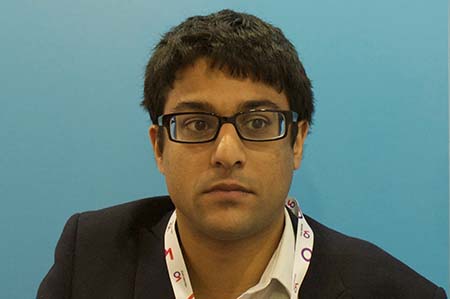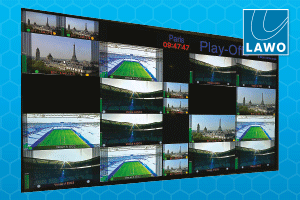Kieran Kunhya, MD at Open Broadcast Systems predicts a more concerted move to IP studios, enabling broadcasters to properly maximise the benefits of IP. However, this will not be without challenges.

Despite proven benefits in remote production, live production and use of software-based architecture, broadcasters are choosing to merely dip their proverbial toes in IP, writes Kieran Kunhya, MD at Open Broadcast Systems, who urges a more vigorous move to IP workflows in studios.
IP has been greatly talked about for a number of years, but very few broadcasters are actually taking the leap to IP workflows in studios. Those that are, for the most part, are dipping their toes in the water with some mostly experimental workflows or productions, and they often have some sort of back-up in place.
As these experiments prove more and more reliable, we will begin to see a concerted move to IP studios, enabling broadcasters to properly maximise the benefits of IP. However, this will not be without challenges.
Remote production
Remote production is an interesting scenario for IP. Connectivity is now good enough to backhaul all traffic over an IP network to a studio. This saves the broadcaster vast amounts through not having to have teams of people on-site and all the associated costs.
Live production environment
The live production environment is still very much SDI-based. SDI provides only a single video feed down a single cable. The biggest challenge is the cables, you need lots of them! At the highest size, SDI routers are limited to 1,152×1,152 feeds; facilities routers are now filling up, with the current explosion of content.
The broadcast world is now learning from the much larger economies of scale in the networking world. 10GB Ethernet is now ubiquitous, and 100GB/s is now relatively affordable. This means broadcasters can build facilities that are usable and upgradable from day one, be it for more HD, 4K or even 8K. Given that technologies change at a fast pace, that easy scalability is absolutely key.
SMPTE 2022-6 is being used today as a bridge between the SDI and IP world in complex, multi-vendor facilities. It transports an SDI stream directly over IP, including legacy data such as the vertical blanking interval (VBI) and the cyclic redundancy check (CRC). For this reason, it is relatively inefficient in an IP world.
The industry is looking to SMPTE 2110 as the future. It carries video and audio separately without the legacy constraints described previously, and handles timing through precision time protocol (PTP). It is also suitable for higher resolution signals such as 4K and 8K.
Benefits of deploying software-based architecture
Although IP is becoming more widely deployed, there are very few broadcasters doing this using software. This seems a little surprising, as it means they are not making the most of what IP can deliver in terms of cost efficiency, flexibility and scalability.
Use of a pure software-based architecture increases flexibility. Commercial off-the-shelf (COTS) IT servers can have multifunction capabilities, running multiple processes such as high-density decoding and encoding in a single chassis.
There are numerous manufacturers offering SDI-based solutions around COTS IT equipment, and a few offering SMPTE 2022-6 and SMPTE 2110 solutions in pure software.
Many traditional hardware manufacturers are treating SMPTE 2110 as the nirvana of IP video, but software implementation is challenging. The SMPTE 2110 series is a complex set of documents with many different profiles. It is likely that the most common timing profile will be 2110-N, narrow gapped. This has very tight timing requirements of four packets (about 40us), which is complicated to achieve in software.
Furthermore, no products to measure compliance of the timing model currently exist. The gapped nature also means the VBI will remain, a long-outdated relic from the past. Unfortunately, all this means that legacy constraints will exist for decades and continue to reduce business agility in the broadcast industry.
It is likely that initial multi-vendor 2110 facilities will be challenging to implement, with some reverting to 2022-6 owing to the complexity. That said, the introduction of uncompressed IP and software into the broadcast environment will be the biggest transition in production since the transition from analogue to digital.















































































